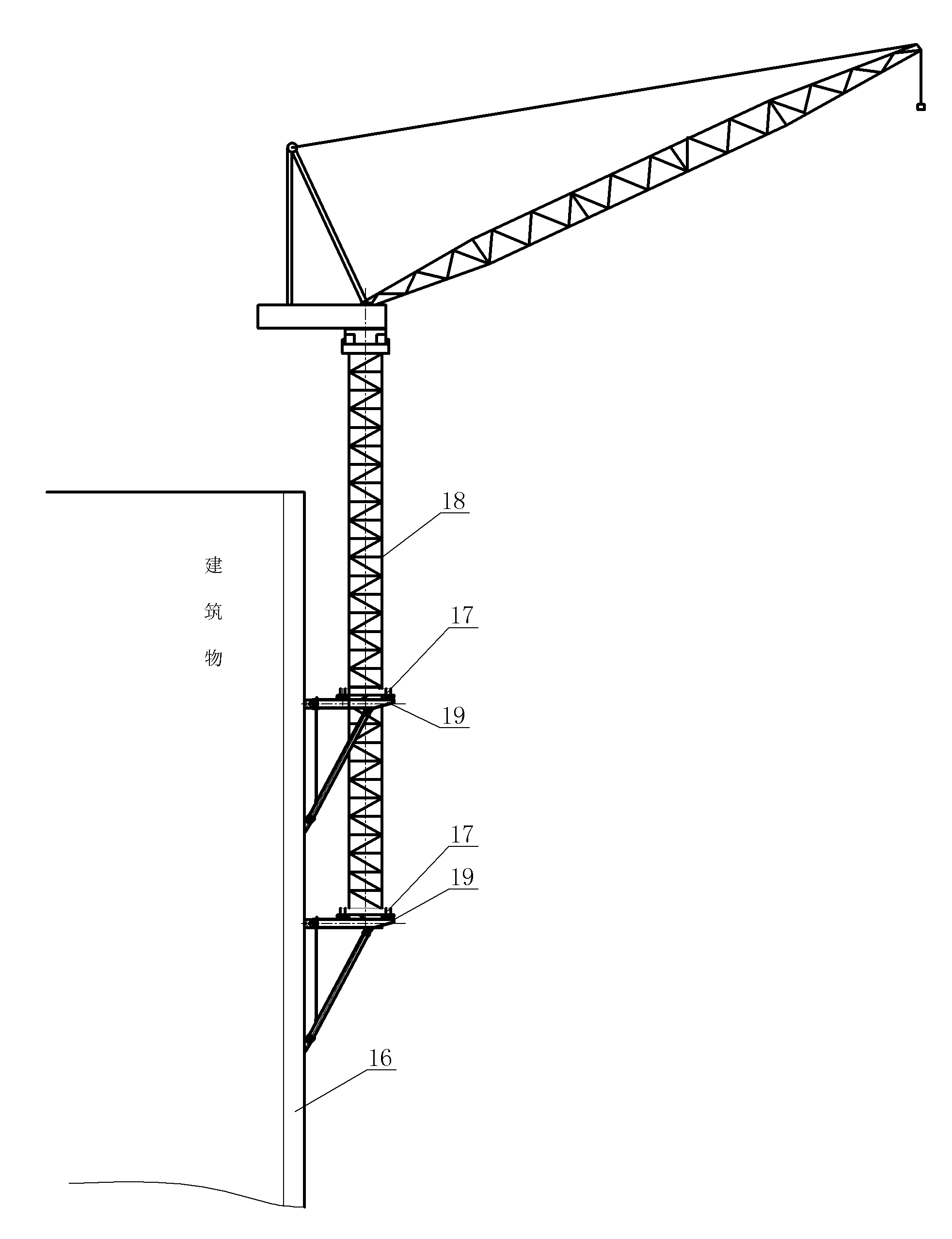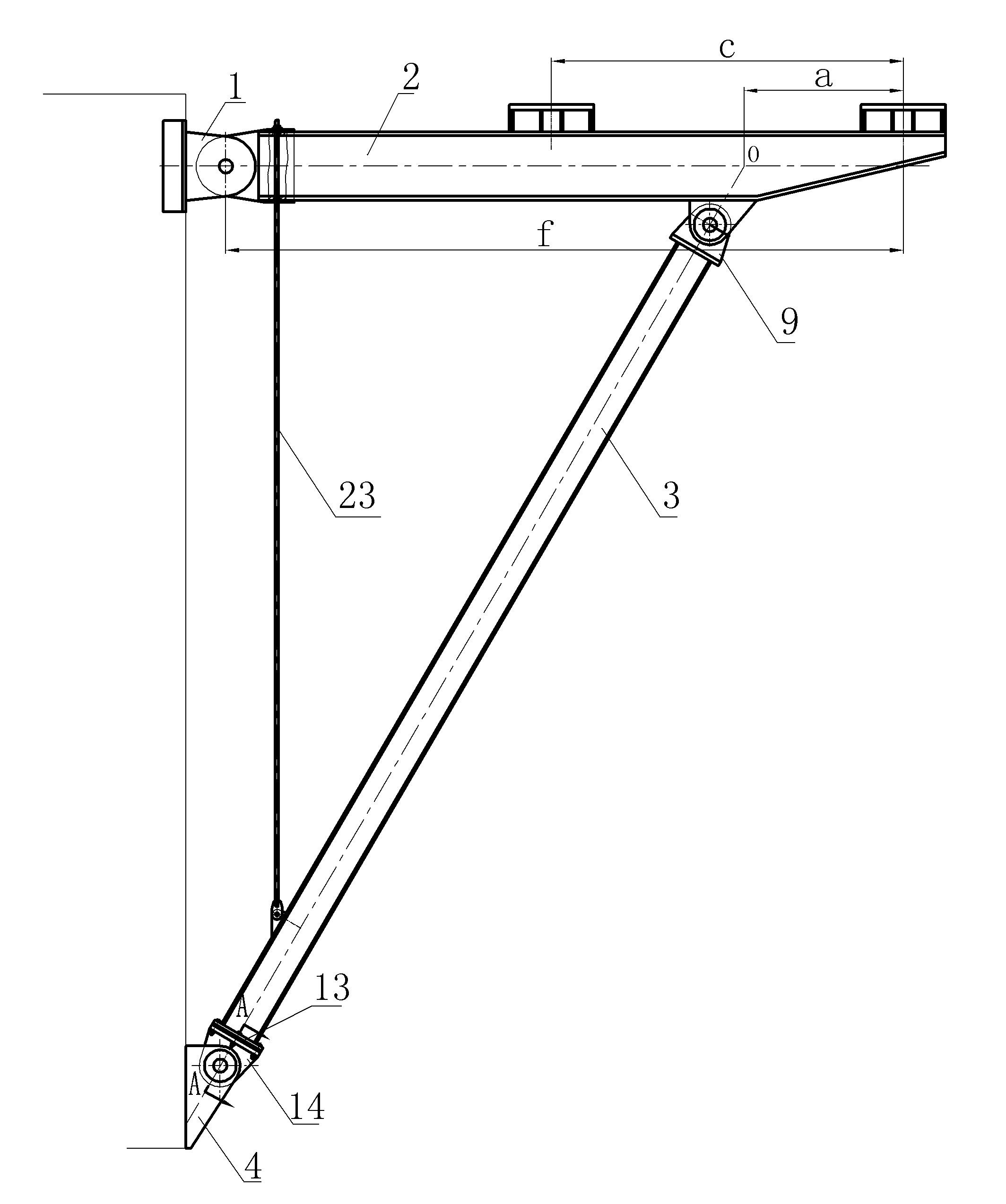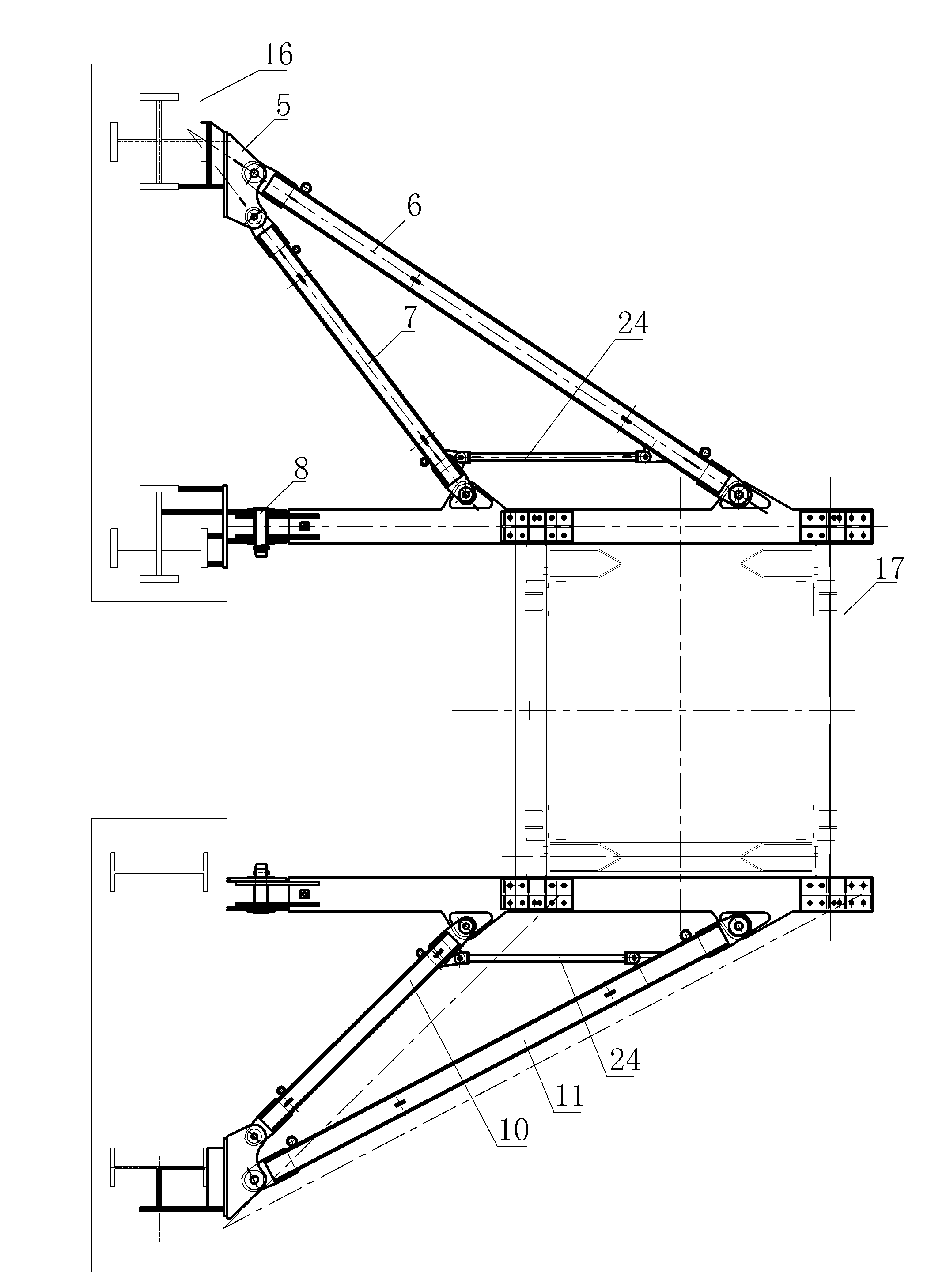Suspended-rising support system of tower crane
A tower crane and suspension-climbing technology, which is applied to cranes and other directions, can solve problems such as increasing use cost, increasing structural cost, excessive horizontal force, etc., and achieves good adaptability, material saving, and horizontal load reduction.
- Summary
- Abstract
- Description
- Claims
- Application Information
AI Technical Summary
Problems solved by technology
Method used
Image
Examples
Embodiment
[0031] Example: such as figure 1 , figure 2 As shown, the present invention includes three sets of identical supporting structures 19, and two sets of adjacent supporting structures 19 are arranged up and down to support the tower body during normal operation. The support structure 19 includes a support frame 17, a main beam 2, two diagonal braces 3 supporting the main beam 2 at the lower part of the main beam, and first, second, third and fourth support bars supporting the main beam 2 in the horizontal direction. 6, 7, 10, 11; one end of the main beam 2 is connected to the embedded part in the wall 16 through the first ear plate 1, wherein the first ear plate 1 is connected to the main beam 2 through the first pin shaft 8, and the diagonal brace One end of the rod 3 is connected to the embedded part in the wall 16 through the second ear plate 4, and the first, second, third and fourth struts 6, 7, 10, 11 are respectively connected to the wall body through the third ear plat...
PUM
 Login to View More
Login to View More Abstract
Description
Claims
Application Information
 Login to View More
Login to View More - R&D
- Intellectual Property
- Life Sciences
- Materials
- Tech Scout
- Unparalleled Data Quality
- Higher Quality Content
- 60% Fewer Hallucinations
Browse by: Latest US Patents, China's latest patents, Technical Efficacy Thesaurus, Application Domain, Technology Topic, Popular Technical Reports.
© 2025 PatSnap. All rights reserved.Legal|Privacy policy|Modern Slavery Act Transparency Statement|Sitemap|About US| Contact US: help@patsnap.com



